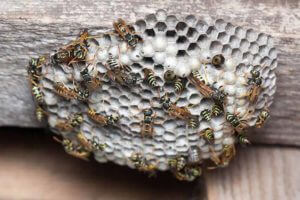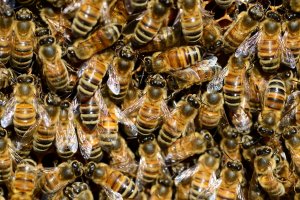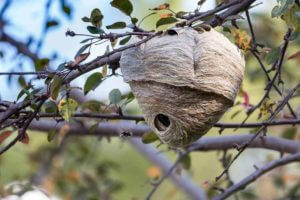Zika. West Nile. Malaria. Encephalitis. These are but a few of the dangerous diseases commonly associated with mosquitoes. While the threat for these diseases is nowhere near as high in the United States as it is in other countries, it is still something to be mindful of; as the mosquito’s real danger goes well beyond the prick of a sting or the resulting, itchy welt. According to the CDC, mosquitoes kill more people per year around the world than any other living creature! With these astronomical numbers, it is no wonder that we are always on high alert for these insects, especially when traveling.
It is important to know that mosquitoes are simply a vector for transmitting disease; the original host is usually a bird, and in some cases horses or deer. In Michigan, the bird suspects include Blue Jays, robins, and crows, which is why their populations are monitored by health officials. The insects feed on the blood of the infected animal, and then move on from host to host. Interestingly enough, it is only the female mosquitoes that bite as they require blood to develop eggs. Males, on the other hand, are rather innocuous, feeding on plant nectars and juices instead.
Mosquito Lifecycle
Michigan has roughly 60 different species of mosquito, including Aedes Egypti, Anopheles, and Culex; All 60 species fall into 3 main categories: permanent water, floodwater, and artificial container/tree hole mosquitoes. Aptly named, all three require some type of standing water source to breed and grow, such as ponds, flooded areas, old tires and water-filled buckets.
All mosquitoes start out as an egg which hatch when they are exposed to water. The larvae, called “wigglers” because of their movement patterns, will molt several times before turning into a pupa. In the pupa, or “tumbler”, stage the mosquito will not feed. This is the final stage before they emerge from the water as adults. Adult female mosquitoes can lay up to 100 eggs about every third night after mating only once! After laying three sets the mosquito will die; her eggs will hatch, thus starting the lifecycle over again. While this cycle typically takes up to two weeks, it can range from 4 days to as long as a month.
Zika and Mosquitoes
Since mosquitoes are cold-blooded, spring is the season in which they become active— hibernating once the temperatures drop below 50 degrees. In the extreme South and Hawaii, mosquito season has been known to last throughout the year! This is why we must be mindful when traveling abroad. Many of the diseases spread most commonly by mosquitoes are contracted in countries outside of the US; most prevalently the Zika virus. It is, however, important to know that while there is no current local transmission of the Zika virus in the United States, infection during pregnancy can cause certain birth defects; it transfers from a pregnant woman to her fetus. A great resource to remain up-to-date on Zika can be found here.
Other Threats
Despite the threat of Zika being minimal, there are other, more easily contracted ailments. Malaria and West Nile are the most well-known, and although both transmit through the insect’s bite there are several differences; primarily, malaria is a parasite, whereas the West Nile is a virus. Only Anopheles—and only females—can transmit malaria. Malaria is caused by plasmodium, a one-celled parasite. The female Anopheles mosquito picks up the disease by drinking the blood of the infected. Unfortunately, malaria kills 80% of its hosts.
On the other hand, only around 20% of those infected with the West Nile virus exhibit mild flu-like symptoms; it is easy to beat. If you do exhibit symptoms, however, there are no medications to treat the illness, though ver-the-counter pain medications can assist in relieving the flu-like symptoms. It is important to know that less than 1% of those infected with West Nile present with serious symptoms developing into neurologic illnesses such as encephalitis or meningitis.
Another, far less threatening issue caused by mosquitoes is nuisance of their bites. The red, itchy bumps are simply a summertime annoyance. The bumps are caused by histamine produced by the body to fight off the foreign substance (mosquito saliva) that enters the area through the broken skin. Some people react worse than others who become more tolerant to a mosquito’s saliva over time. For many, the reaction remains consistent, and mosquito bites continue to be an annoyance.
Treating Mosquitoes
There is no way to eliminate all of the mosquitoes on one’s property, but they can be controlled. One of these tools is to larvicide any standing water that cannot be emptied out around a home. These areas may include ponds and catch basins. Another tool is to chemically treat the barrier of the property or area. If you’re not a prime candidate for a barrier treatment, consider purchasing a fan for the deck, patio or lawn! Mosquitoes are not strong fliers, so a fan swathing back and forth will keep them out of the area you’re trying to enjoy. This will make your BBQ or family gathering much more enjoyable while also being eco-friendly. Maintaining awareness of the dangers that surround mosquitoes is by far the best method of protecting yourself from a potentially dangerous illness.
Sources:
Travelers’ Health
https://wwwnc.cdc.gov/travel/page/zika-travel-information
Mosquitoes in Michigan: Here’s What To Know To Help Keep Them Away
Frank McGeorge – https://www.clickondetroit.com/health/mosquitoes-in-michigan-heres-what-you-need-to-know-the-facts
Tips and Dangers Associated with Mosquitoes in Michigan
Laura Sternberg – https://www.tripsavvy.com/mosquitoes-in-michigan-1085463
West Nile Virus | West Nile Virus | CDC
https://www.cdc.gov/westnile/index.html
Malaria | About Malaria – Biology | CDC
https://www.cdc.gov/malaria/about/biology/index.html





 One of the main pest issues in Northern Michigan and the Upper Peninsula is spiders, their webs, and the droppings they leave on homes and businesses. In most cases, spiders only need to be treated from the exterior of the home. This prevents them from building webs and getting inside. We include a web sweeping service with our spider spray treatment. We use poles and extensions to reach webs and nests in the high peaks of your home. Removing the webs along with an exterior spray can make a huge difference for your home. This spray also prevents against other crawling insects and bees, wasps, and hornets.
One of the main pest issues in Northern Michigan and the Upper Peninsula is spiders, their webs, and the droppings they leave on homes and businesses. In most cases, spiders only need to be treated from the exterior of the home. This prevents them from building webs and getting inside. We include a web sweeping service with our spider spray treatment. We use poles and extensions to reach webs and nests in the high peaks of your home. Removing the webs along with an exterior spray can make a huge difference for your home. This spray also prevents against other crawling insects and bees, wasps, and hornets.